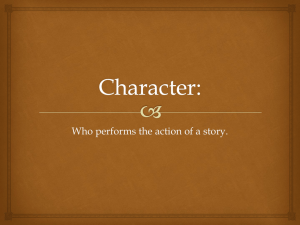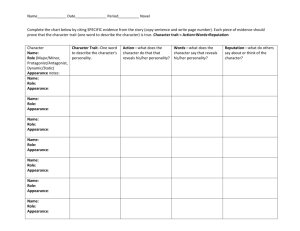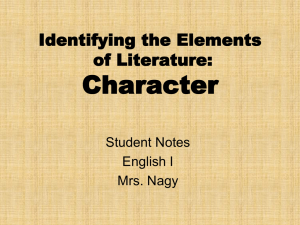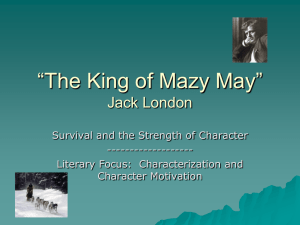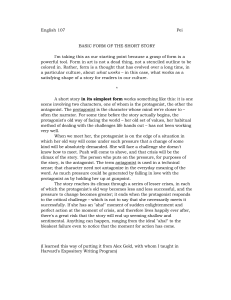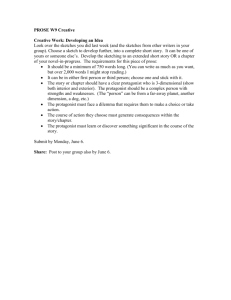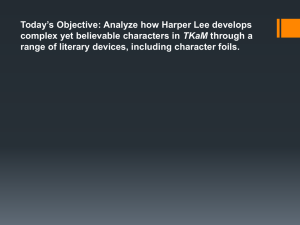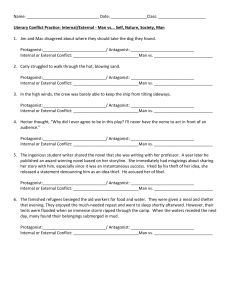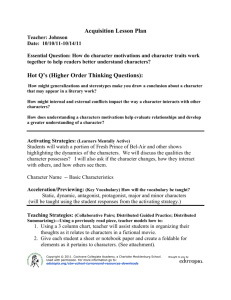Macbeth Character Analysis Assignment Instructions
advertisement
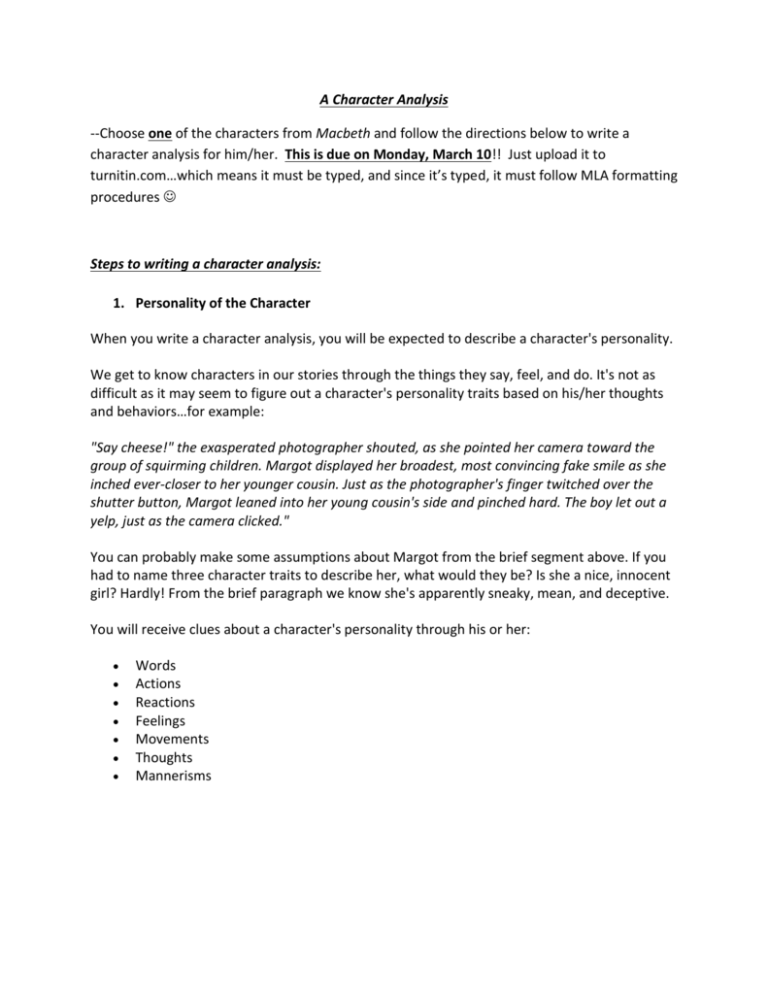
A Character Analysis --Choose one of the characters from Macbeth and follow the directions below to write a character analysis for him/her. This is due on Monday, March 10!! Just upload it to turnitin.com…which means it must be typed, and since it’s typed, it must follow MLA formatting procedures Steps to writing a character analysis: 1. Personality of the Character When you write a character analysis, you will be expected to describe a character's personality. We get to know characters in our stories through the things they say, feel, and do. It's not as difficult as it may seem to figure out a character's personality traits based on his/her thoughts and behaviors…for example: "Say cheese!" the exasperated photographer shouted, as she pointed her camera toward the group of squirming children. Margot displayed her broadest, most convincing fake smile as she inched ever-closer to her younger cousin. Just as the photographer's finger twitched over the shutter button, Margot leaned into her young cousin's side and pinched hard. The boy let out a yelp, just as the camera clicked." You can probably make some assumptions about Margot from the brief segment above. If you had to name three character traits to describe her, what would they be? Is she a nice, innocent girl? Hardly! From the brief paragraph we know she's apparently sneaky, mean, and deceptive. You will receive clues about a character's personality through his or her: Words Actions Reactions Feelings Movements Thoughts Mannerisms 2. Character Role When you write a character analysis, you must also define each character's role. In addition to having personality traits, characters also fill certain roles in a story. They either play a major role, as a central element to the story, or they play a minor role to serve a supporting role in the story. **Protagonist: The protagonist of a story is often called the main character. The plot revolves around the protagonist. There may be more than one main character. In The Adventures of Huckleberry Finn, Huck Finn is the protagonist. In Little Red Riding Hood, the little girl is the protagonist. **Antagonist: The antagonist is the character who represents a challenge or an obstacle to the protagonist in a story. In some stories, the antagonist is not a person! In Little Red Riding Hood, the wolf is the antagonist. In The Adventures of Huckleberry Finn, society is the antagonist. Society, with its unfair laws and rules, represents the obstacle to Huck's development as a person. **Foil: A foil is a character who provides contrast to the main character (protagonist), in order to emphasize the main character's traits. In A Christmas Carol, the kind nephew Fred is the foil to nasty Ebenezer Scrooge. 3. Character Development (Growth and Change) When you are asked to write a character analysis, you will be expected to explain how a character changes and grows. Most characters go through changes as a story unfoldsotherwise, stories would be pretty boring! Other Useful Terms for Character Analysis Flat Character: A flat character has one or two personality traits that don't change. The flat character can play a major or a minor role. Round Character: A round character has many complex traits-and those traits develop and change in a story. A round character will seem more real than a flat character, because people are complex! Stock or Stereotype Character: A character who represents a stereotype is a stock character. These characters exist to maintain widespread belief in "types," such as hot-tempered redheads, stingy businessmen and absent-minded professors. Static: A static character never changes. A loud, obnoxious "background" character who remains the same throughout the story is static. A boring character who is never changed by events is also static. Dynamic: Unlike a static character, a dynamic character does change and grow as the story unfolds. Dynamic characters respond to events and experience a change in attitude or outlook.
